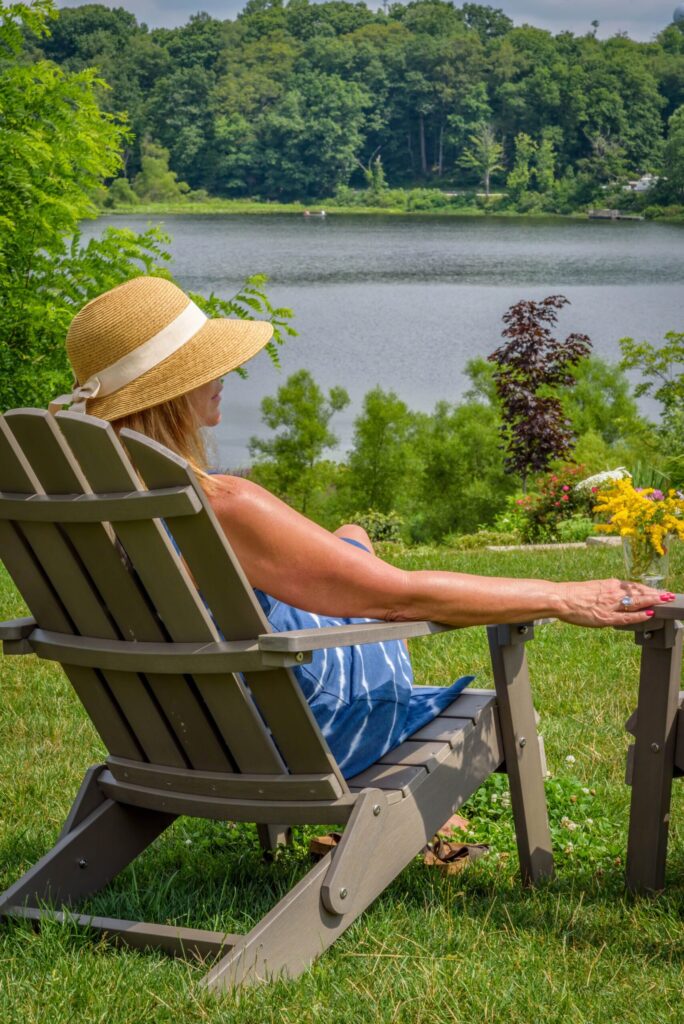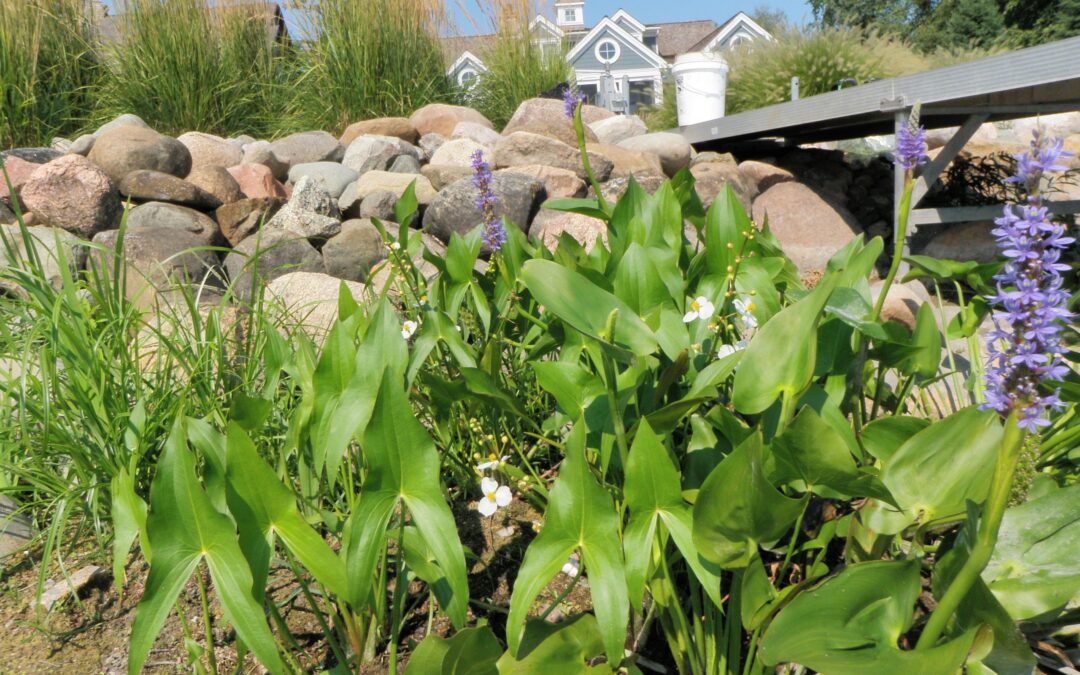Chances are if you have visited a spa or gone for a massage you were surrounded by soothing sounds from the moment you entered. What is often heard is the sound of nature; water lapping against the shore, leaves rustling in the breeze, birds singing and frogs calling.

A lake is one of the loveliest backdrops to nature. It’s no wonder people want to own lakefront property. The water’s color, the wildlife that lives on, and in the lake, the spectacular sunrises and sunsets each day are nature at its best. The beauty of the lake never gets old; it changes with the seasons but remains a constant connection to our love of nature.

However, what draws us to the lake is usually the first thing that gets destroyed when building or remodeling a lake house. Trees get cut down, a concrete seawall gets built, and turf grass lawns get installed along with non-native shrubs and flowers. The house and lot are manicured and quite beautiful but suddenly the only sounds you hear are speed boats, lawn mowers, leaf blowers and weed trimmers.
What happened to the soothing sounds of nature?
If you want to hear birds singing, they need food and habitat. If you want to hear frogs calling, they need a shoreline that allows them to easily move from water to land. All the sights and sounds of nature that draw us to the lake rely on a healthy, thriving ecosystem that provides the necessary requirements for survival.
If we pay attention to what nature needs when designing a lakefront retreat, there can be a balance for both people and wildlife.
There are many resources to help you create a lakefront property that supports nature:
- Michigan Natural Shoreline Partnership
- Smart Trees and Shrubs for Natural Shoreline Plantings
- Maintaining and Restoring Natural Shorelines
- Shoreline Living (hard copies available at LMEF office)
- Beginners Guide to Shoreline Stewardship (video)
What you do makes a difference,
Jane Goodall
and you have to decide what kind of difference you want to make.

Hi, I’m Debbie Palmer. I received a BS in Horticulture from Purdue University. Here at LMEF, I am responsible for outreach presentations, monitoring the lake and it’s wetlands, project manager for restoration and research projects, and act as a community resource for all things related to the well-being of Lake Maxinkuckee and its surrounding watershed. I completed Indiana Watershed Leadership Academy, volunteer with the Indiana Clean Lakes Program, Hoosier River Watch and Marshall County Lakes and Waters and serve as a Board Member for Indiana Lakes Management Society.


Recent Comments